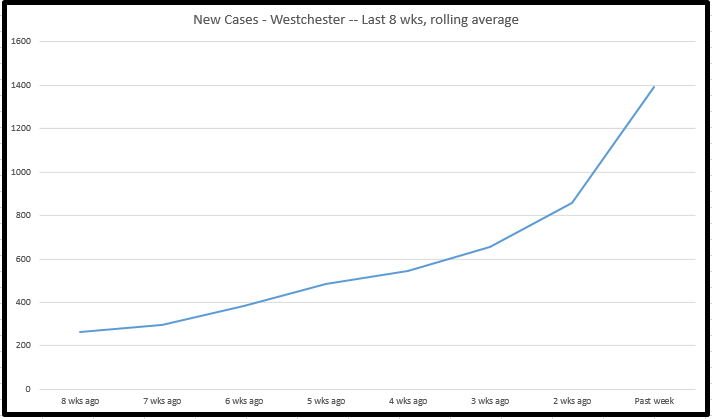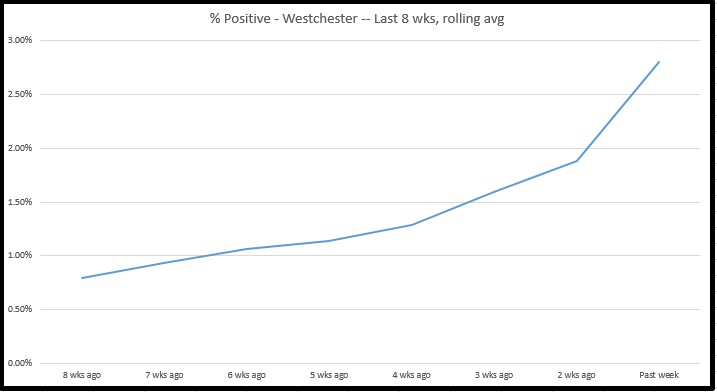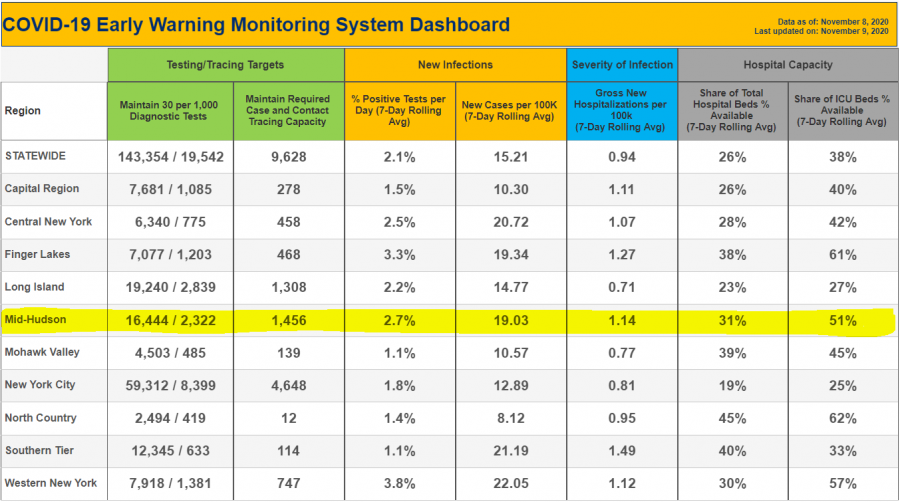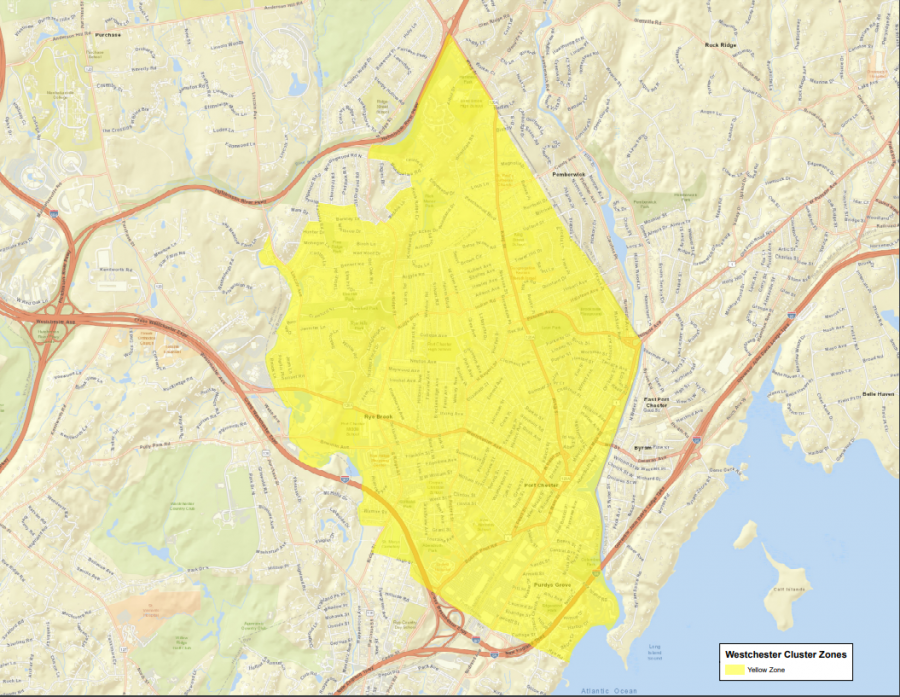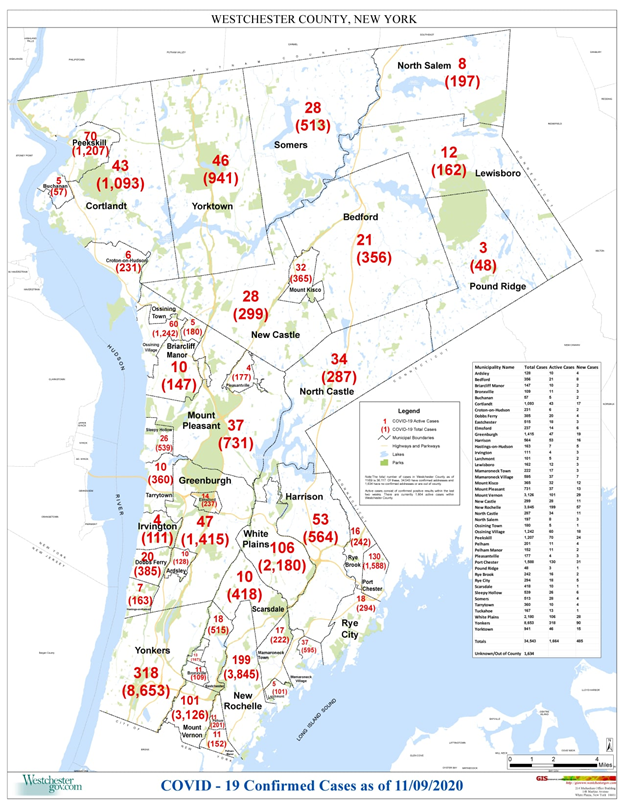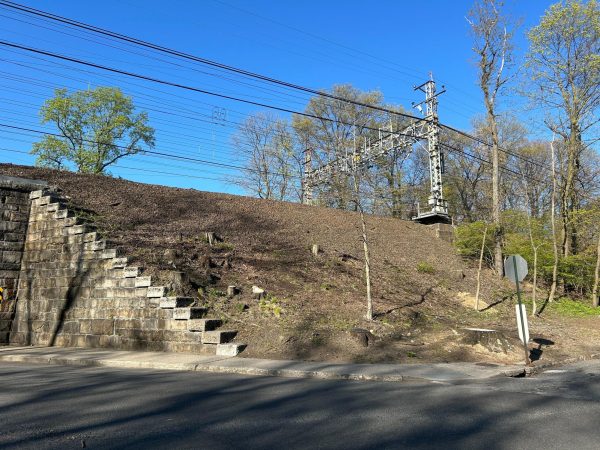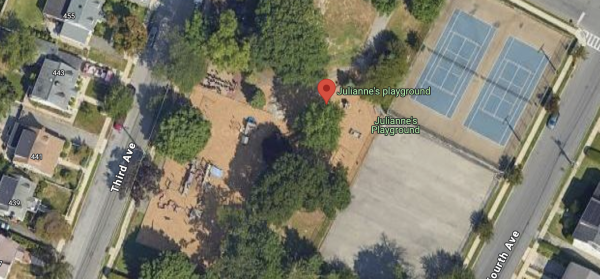Let’s just focus on Westchester today, because on the face of it our numbers do not look encouraging. However, according to Gov. Andrew Cuomo, much of the increase appears to be in one micro-cluster centered around Port Chester.
On Monday, our single day testing-positive percentage for Westchester was at 4.17%, which is higher than we’ve been since March. The day before it was 3.41%.
As you’ll recall, the state has a threshold at which it considers a region to be problematic (which can possibly include the requirement to close schools), and that threshold is 9% on a rolling seven-day average. While we are not there yet—our current seven-day average is 2.8%—we are heading in the wrong direction at the moment. (Note that there are different criteria for micro-clusters, discussed below, which seem to be more of the state’s focus at the moment.)
Eight weeks ago, Westchester had .8% positivity on a rolling seven-day average (see graph above). A month ago, we were at 1.3%. A week ago, it was 1.89%. But we have gone up by a percentage point, to 2.8%, in the space of a seven days. Similarly, eight weeks ago, we were seeing about 230 new cases per week in Westchester. Two weeks ago, it was about 650. This past seven days, we had almost 1,400 new cases. The number tested each week has risen some as well, but not at the same rate.
